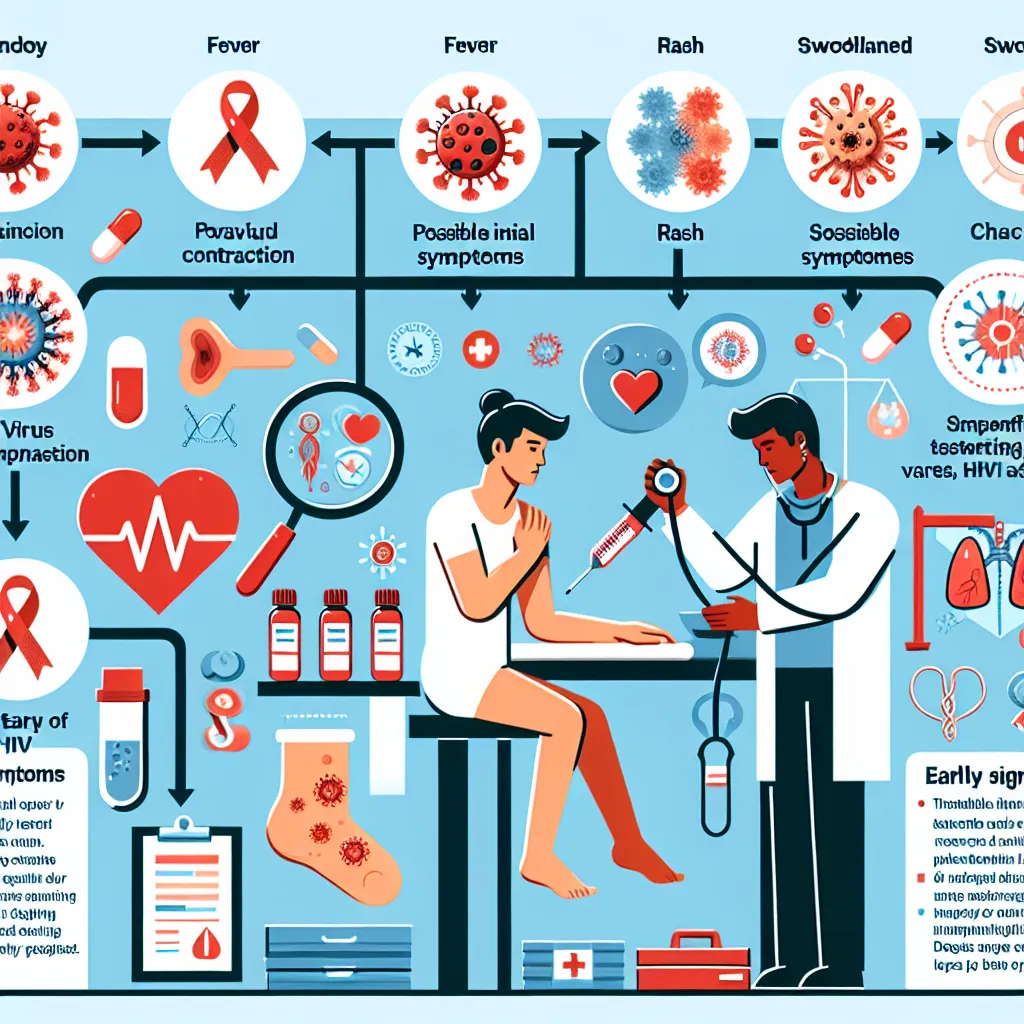Understanding Early HIV Symptoms: A Comprehensive Guide
Understanding Early HIV Symptoms: A Comprehensive Guide
HIV (Human Immunodeficiency Virus) is a serious medical condition that weakens the immune system, leaving individuals susceptible to various infections and diseases. Early detection and prompt treatment are crucial in managing HIV and preventing its progression into AIDS (Acquired Immunodeficiency Syndrome).
This article aims to provide you with a comprehensive guide on early HIV symptoms, their significance, and what steps you should take if you suspect an HIV infection.
What is HIV?
HIV is a virus that attacks the immune system, specifically targeting CD4 cells (T cells), which play a crucial role in the body’s defense against infections. Over time, HIV can destroy a significant number of these cells, compromising the immune system’s ability to fight off diseases and infections effectively.
Without proper treatment, HIV can progress to AIDS, which is the most advanced stage of the infection. AIDS is characterized by severe damage to the immune system, leaving individuals vulnerable to life-threatening opportunistic infections and cancers.
Common Modes of HIV Transmission
HIV can be transmitted through various bodily fluids, including blood, semen, vaginal fluids, rectal fluids, and breast milk. The most common modes of HIV transmission include:
- Unprotected sexual intercourse (anal, vaginal, or oral) with an HIV-positive individual.
- Sharing needles, syringes, or other drug injection equipment contaminated with HIV-infected blood.
- Transmission from an HIV-positive mother to her child during pregnancy, childbirth, or breastfeeding.
- Less commonly, occupational exposure to HIV-infected blood (e.g., healthcare workers).
Early HIV Symptoms
Recognizing the early symptoms of HIV is crucial for timely diagnosis and treatment initiation. However, it is important to note that symptoms alone are not enough to confirm an HIV infection, as they can resemble those of other viral illnesses.
1. Fever: Many people experience flu-like symptoms within 2-4 weeks after contracting HIV. This includes fever, often accompanied by chills, body aches, and fatigue.
2. Rash: Another early symptom of HIV is a rash that usually appears on the trunk of the body. It may be accompanied by redness, itching, and small bumps.
3. Sore throat and swollen lymph nodes: HIV can cause persistent sore throat and swollen lymph nodes, particularly in the neck and groin areas.
4. Headaches and muscle aches: Some individuals may experience frequent headaches and muscle aches that are not relieved by common over-the-counter medications.
5. Fatigue: Persistent fatigue and lack of energy can be an early sign of HIV infection. This symptom may be accompanied by unexplained weight loss.
6. Night sweats: Unexplained night sweats, often severe, can occur during the early stages of HIV infection.
It is important to remember that these symptoms can vary in intensity and may not always be present. Some individuals may experience no symptoms at all during the early stages of HIV infection.
When to Seek Medical Assistance
If you have engaged in any high-risk behaviors or have concerns about a potential HIV infection, it is important to seek medical assistance promptly. Early detection and treatment significantly improve health outcomes and reduce the risk of transmitting the virus to others.
Medical professionals can perform various tests to determine if you have contracted HIV. These tests may include:
- HIV antibody test: This test detects antibodies produced by the immune system in response to the virus. It can be performed using a blood sample, oral fluid, or urine.
- HIV antigen test: This test detects the presence of HIV antigens, which are viral proteins produced during the early stages of infection. It is usually performed alongside an antibody test.
- HIV nucleic acid test (NAT): This test directly detects the virus’s genetic material (RNA or DNA) in the blood. It is highly accurate and often used for early detection in high-risk situations.
If you test positive for HIV, your healthcare provider will guide you through the next steps, which may include further tests to determine the stage of the infection and initiation of antiretroviral therapy (ART).
Prevention and Treatment
While there is no cure for HIV, its transmission can be prevented, and its progression can be significantly slowed down with appropriate measures:
- Practice safe sex by using condoms consistently and correctly.
- Avoid sharing needles or drug injection equipment.
- Get tested regularly for HIV, especially if you engage in high-risk behaviors.
- Consider pre-exposure prophylaxis (PrEP) if you are at high risk of contracting HIV.
- If you are HIV-positive, adhere to your prescribed antiretroviral therapy (ART) and follow your healthcare provider’s recommendations.
It is important to educate yourself and others about HIV, combat stigma and discrimination, and promote a supportive environment for individuals living with HIV.
Conclusion
Early detection of HIV is crucial for effective treatment and management. Understanding the early symptoms of HIV and seeking prompt medical assistance is vital in preventing the progression of the infection and protecting your overall health.
Remember, if you suspect an HIV infection or have engaged in any high-risk behaviors, do not hesitate to consult a healthcare professional. Testing, early intervention, and proper adherence to treatment can make a significant difference in living a healthy life with HIV.

